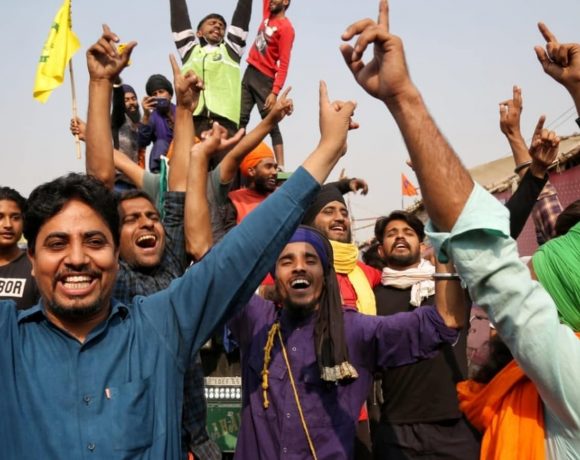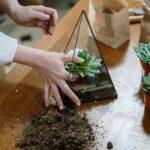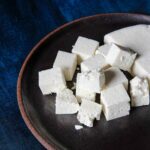Heaven on Earth – Jammu And Kashmir
 Jammu and Kashmir are really three regions: the foothill plains of Jammu; the lakes and blue valleys of Kashmir rising to alpine passes, the high altitude plains and starkly beautiful mountains of Ladakh, which lies beyond those passes. It’s enough to move one to poetry. Srinagar is Kashmir’s summer capital and Jammu, the winter capital. One of Kashmir’s greatest attractions are the Dal Lake houseboats. The Mughal Gardens of Srinagar is another tourist haunt. Pahalgam, Gulmarg, near Srinagar are picturesque towns, the first a by-route to Amarnath, the second a premier skiing resort. The famous Shankaracharya temple is perched high on top of the valley. Jammu is a templed town. Ladakh, the land of high passes, draws tourists to its Hemis Gompa, Stok Palace and Museum. Srinagar, the capital, has a distinctly Central Asian look. It stands on the Dal Lake and the picturesque Jhelum River. Srinagar is also considered to be a small-sized Lake District. The massive Dal Lake, near the city and Nagin, the ‘Jewel in the ring’, a smaller lake, to the north, is dotted with water lilies. The lakes are mobile shops of moving shikaras. The old city has a labyrinth of alleyways and mosques. Srinagar is located in the heart of the Kashmir valley at an altitude of 1,730 m above sea level. The changing play of the seasons and the salubrious climate ensures that the city is equally attractive to visitors around the year.
Jammu and Kashmir are really three regions: the foothill plains of Jammu; the lakes and blue valleys of Kashmir rising to alpine passes, the high altitude plains and starkly beautiful mountains of Ladakh, which lies beyond those passes. It’s enough to move one to poetry. Srinagar is Kashmir’s summer capital and Jammu, the winter capital. One of Kashmir’s greatest attractions are the Dal Lake houseboats. The Mughal Gardens of Srinagar is another tourist haunt. Pahalgam, Gulmarg, near Srinagar are picturesque towns, the first a by-route to Amarnath, the second a premier skiing resort. The famous Shankaracharya temple is perched high on top of the valley. Jammu is a templed town. Ladakh, the land of high passes, draws tourists to its Hemis Gompa, Stok Palace and Museum. Srinagar, the capital, has a distinctly Central Asian look. It stands on the Dal Lake and the picturesque Jhelum River. Srinagar is also considered to be a small-sized Lake District. The massive Dal Lake, near the city and Nagin, the ‘Jewel in the ring’, a smaller lake, to the north, is dotted with water lilies. The lakes are mobile shops of moving shikaras. The old city has a labyrinth of alleyways and mosques. Srinagar is located in the heart of the Kashmir valley at an altitude of 1,730 m above sea level. The changing play of the seasons and the salubrious climate ensures that the city is equally attractive to visitors around the year.
The climate is one of opposites: while in summer time the heat builds upto breaking point in the foothills, people of Ladakh and Kashmir wait for the snow to melt.on the high passes. From October onwards, Jammu becomes a much more pleasant destination. However, the best time to enjoy vale of Kashmir and the adventures of Ladakh region is between the months of May and September. The people of Jammu and Kashmir are renowned for their warmth and hospitality. They are simple, hospitable people and being invited to a village wedding or into somebody’s house for a hot cup of tea is not surprising. Set like a jewelled crown on the map of India, Kashmir is a multi-faceted diamond, changing its hues with the seasons – always extravagantly beautiful. Two major Himalayan ranges, the Great Himalayan Range and the Pir Panjal, surround the landscape from the north and south respectively. They are the source of great rivers, which flow down into the valleys, forested with orchards and decorated by lily-laden lakes.
HOW TO REACH
By Air – Regular flights from Delhi and other parts of India connect Srinagar, Jammu and Leh, some directly and some indirectly.
By Rail – Jammu is connected to major cities in India with regular rail services.
By Road – Jammu is connected by road to Delhi and Jalandhar, Ladakh, Srinagar and a few more destinations. Srinagar is connected to Jammu while Leh- Ladakh region is connected to Srinagar and Manali.
Major Tourist Attractions
Ainsa Monastery
Ainsa Monastery is located on a hill at Panamik village in Leh District of Jammu and Kashmir. It is about 25 km from Sumur. This ancient monastery was built by Lama Changse Sherpa Zangpo, who was the disciple of Jamgon Tsonkhapa and the founder of the yellow sect. The remarkable feature of the Ainsa monastery is the right foot print of the great scholar Dachomba Nima Goon on the rock. Hot springs located near the monastery are considered to have healing power.
Alchi Gompa
Alchi is an ancient Gompa located 70 km from Leh on the banks of river Indus in Jammu and Kashmir. It is the only monastery on flat ground in Ladakh. The Gompa is taken care of by the monks from Likir monastery. Inside the Gompa, there are thousands of miniature-sized paintings depicting Buddha.
Amar Mahal Palace Museum
Amar Mahal Palace Museum is a beautiful red sand stone palace, it stands amidst the most picturesque surroundings of Jammu. The palace, planned by a French architect, resembles a French chateau despite the work of several Indian artisans. The Amar Mahal Museum has a rich collection of sculptures, paintings, inscriptions and books. Pahari paintings and family portraits of rulers of Jammu and Kashmir are displayed in the Durbar Hall. The 120 kg solid gold throne made by Maharaja Hari Singh is the most spectacular possession of the museum.
Amarnath
One of the holy Trinity, Shiva is a living God. the most sacred and the most ancient book of India, the Rigveda evokes his presence in its hymns. Vedic myths, rituals and even astronomy testify to his existence from the dawn of time. But Shiva, Destroyer, the mendicant, is undefinable : He is a great yogi. Legend has it that Shiva recounted to Parvati the secret of creation in a Cave in Amarnath. Unkown to them a pair of mating doves eavesdropped on this conversation and having learned the secret, are reborn again and again, and have made the cave their eternal abode. Many pilgrims report seeing the doves pair when they trek the ardous route to pay obeisance before the ice-lingam
Bagh-e-Bahu garden
Bagh-e-Bahu is an extensive terraced garden built around the Bahu Fort in Jammu. This beautiful garden with its glittering waterfalls, artificial lake, lush green lawns, flower beds, fountains and big trees is a favourite picnic spot of the city folk and it also has a pleasant view of the city.The garden can be reached by mini-buses and auto-rickshaws from the Jammu city.
Catholic Church
Catholic Church is located in the heart of Leh city. The hexagonal church hall is painted with pictures of Christ and stories from Bible. A statue of Saint Thomas is located at the entrance.
Chashma Shahi Gardens
Chashma Shahi Gardens, also known as Royal Spring, is the smallest among the Mughal gardens, situated above the Nehru Memorial Park, in Srinagar, Jammu and Kashmir. The garden includes three terraces, an aqueduct, waterfalls and fountains laid right through the middle. Multiple kinds of fruit and flower plants can be found in this garden. The fresh water spring in the garden is believed to have medicinal properties. The place offers magnificent views of the Dal Lake and the surrounding mountain ranges.
The Dal Lake
The Dal Lake is a famous lake in Srinagar, the summer capital of Jammu & Kashmir. Dal Lake is connected to a number of other lakes in the valley. 500 or more wooden house boats are plying to facilitate the needs of the tourists.Covered in 18 square km and divided into 4 basins (Gagribal, Lokut Dal, Bod Dal and Nagin). Rup Lank and Sona Lank are the islands.During the winter season the lake sometimes freezes over. The lake has some interesting flora and fauna. The flora include lotus flower, water lillies and water chestnuts. Notable birds are kingfishers and heron.
Gulmarg
Literally meaning “Medow of Flowers” is a hill station. It is a popular Skiing destination. A huge cup shaped meadow, lush and green with slopes where the silence is broken only by the tinkle of cowbells, Gulmarg looks like a fantasy set in a film.The valley of Gulmarg, a large meadow about 3-sq-kms in area, stands at 2,730 metres, 56-km south west of Srinagar . The name means ‘Meadow Of Flowers’ and in the spring it’s just that, a rolling meadow dotted with countless colourful Bluebells, Daisies, Forget Me Not’s and Buttercups. The valley itself is about 3-km long and up to a km wide
Gulmarg Gondola
Gulmarg boasts Asia’s highest and longest cable car project, the Gulmarg Gondola. The two-stage ropeway ferries about 600 people per hour to and from Kongdoori Mountain, a shoulder of nearby Afarwat Peak (4,200 m (13,780 ft)). The ropeway project is a joint venture of the Jammu and Kashmir government and French firm Pomagalski
Hazratbal Mosque
Situated on the western banks of Dal Lake, Hazratbal Mosque is in Hazratbal village of Srinagar District, Jammu and Kashmir. It is about 7 km away from Srinagar. The specialty of the mosque is that it is the only domed mosque in Srinagar. The reflection of the mosque from the lake with its background as the mountains is an enchanting view for the visitors.
Jama Masjid
Jama Masjid in Srinagar is one of the oldest mosques in Kashmir. The Jamia Masjid of Srinagar is situated at Nowhatta, in the middle of the old city. It was built by Sultan Sikandar in 1400 AD. Later, the son of Sultan Sikandar, Zain-ul-Abidin got the mosque extended. The attractions of the Jamia Masjid of Srinagar, Kashmir include beautiful Indo-Saracenic architecture, a magnificent courtyard and 370 wooden pillars
Kailash Lake
Kailash Lake, popularly known as Vasuki Kunda, is situated about 17 km from Bhadarwa in Jammu District. This is one of the major pilgrimage centers in Jammu and Kashmir. Visiting this holy place on the new moon after Rakhi Poornima is considered very auspicious. Visitors need to travel through an extremely steep lonely pass to reach here.
Kolohoi Glacier
Kolohoi Glacier, situated up the Lidder Valley, just below Mount Kolohoi, is currently a hanging glacier. It is basically hollowed out from global warming, the Asian brown cloud, and local environmental factors associated with mountain hydrology. According to the mountaineers from Jawahar Institute of Mountaineering (JIM)in 2008, the glacier has receded by half since 1985. The glacier is not safe to study because it is hollow and in places has 200 foot deep crevasses. The sounds of cracking can be heard from either side of the ice field, which indicates an imminent collapse. The preferred method of approach for viewing is to take the right side. This approach offers less boulder fields on the approach, and the occasional goat/horse/cattle herder can be approached for cheese and Kashmiri tea on the way.
Ladakh
Ladakh is in Jammu and Kashmir and is composed of the cities of Leh and Kargil. It is the Coldest Desert in the world. It is the least most populated regions of Kashmir. With its Burning sun, freezing winds, glaciers, sand dunes Ladakh attacks travelers from all around the world to witness this battle between the elements. Ladakh is totally isolated from the modern world. An authentic land, it is faithful to ancestral customs where life is characterized by intense spirituality. It is the highest inhabited land in the world.
Leh Palace
Overlooking Leh, Leh Palace is one of the major attractions in Ladakh, Jammu and Kashmir. This 9 storey palace was built in 17th century for King Singge Namgyal. Perched on the edge of a hill, it resembles a miniature version of the Potola in Lhasa, Tibet. Leh Palace was the home of the royal family until they were exiled to Stok in the 1830s. Today this palace is a branch of Indian Government”s archaeological conservation organization. There is a Victory Tower above the palace, at the top of the Namgyal hill.
River Lidder
River Lidder is a snow-fed river which originates from the glaciers in the high mountains of Pahalgam, a town of Jammu and Kashmir. This river is the main source of water supply for the town of Anantnag and to its nearby areas. Some of tributaries of the River Lidder are the streams of Aroo and Chandanwari. The area situated on its bank is called the Lidder Valley, which includes the town, Pahalgam. This valley is surrounded by mountains and glaciers and is enriched by many streams.
Martand Sun Temple
The most memorable and beautiful work of King Lalitaditya is the construction of spacious Martand temple, which the emperor got built in honor of the Sun God or Bhaskar.
Paldan Lumo Temple
Paldan Lumo Temple is the highest temple situated on the hill top near the river Indus in Leh District of Jammu and Kashmir. It is in the Spituk Monastery, about 18 km from Leh. Paldan Lumo Temple is dedicated to Vajrabhairava. During the annual festival of January, the terrifying face of Vajrabhairva is unveiled to the public. Dating back to the 16th century, it houses articles of tantrik worship, strange looking images, antiques and arms. The temple also has a shield made of cane. The pillars of the temple are covered with the hides of tigers. The temple is the main attraction among the typical mixture of dusty, dimly lit prayer halls and vivid modern shrines in the complex. The Indian army personnel posted at Leh are the main worshippers at this shrine.
Pari Mahal
few can be seen today. The mahal, on the spur of a hill, is illuminated at night and can be seen from most places Pari Mahal (House of the Fairies) is situated just above Chashma Shahi Gardens, about 10 km from Srinagar, in Jammu and Kashmir. It was once a Buddhist monastery, later converted into a school of astrology by Dara Shikoh – eldest son of Mughal Emperor Shah Jahan. Pari Mahal is a historic monument as well as a well-laid spacious garden. Situated around a small spring, the garden has beautiful flowering plants and various kinds of fruit. Although Pari Mahal boasted a large number of springs earlier, only a in Srinagar. It overlooks the picturesque Dal Lake.
Ramnagar Fort
Ramnagar Fort is a historic fort located at Ramnagar in Jammu District of Jammu and Kashmir. This impressive building was built by Raja Suchet Singh. The king died in 1844, and his wife performed sati near the fort. A larger platform was built on the place, where the queen performed sati and it is called Samadhi of Maharani. The fort has beautiful pahari-style wall paintings. It is accessed by a narrow bridge over the moat. In 1972, the fort was taken over by Archaeological Survey of India and renovation.
sonmarg
sonmarg is situated at 9000 kms above sea level and is a perfect picturesque for scenic beauty and marvelous landscapes. Gushing rivers which are flowing down from snowy forests are really very beautiful. Sonmarg can definitely offer you a adventurous trip in form of treks, angling, alpine skiing and even white water rafting. At the end of Kashmir District, Sonmarg is located which is about 2743 m above the sea level and is truly a Breathtaking place.
Srinagar
Srinagar is termed to be a city of beautiful landscapes and abundant natural beauty. When you visit this place, it will surely leave you unspoken with its mind blowing score of tourist destinations. Srinagar is situated at the foot of Himalaya Hills and is popular as a tourist destination for its stunning locality, tumbling rivers, lakes and also lush green meadows. You can say that it is completely a treasure trove of beauty due to its picturesque lakes like Dal, Nagin and Anchal.
Katra or Vaishnodevi
Katra or Vaishnodevi temple is a small town in Jammu which is located at the distance of 50 kms from the main city. This place serves to be the base camp for all those who wish to visit the popular temple of Vaishno devi located at Trikuta hills. Once you have reached Katra from Jammu, you just need to trek for about 13 kms and you can reach this famous shrine of Vaishno devi. This shrine is a crown of Trikuta Mountains and it is a part of lower Himalayas region. You can see the images of three deities at this place including Mahakali, Maha Lakhmi and Maha Saraswati. Many people visit this place for spiritual purification and rejuvenating their soul. Shrine of Vaishnu Devi is considered to be very holy and sacred by the people. There are three popular temples located at this shrine. You need to trek through the whole route in order to give a visit to all these destinations.
Jammu and Kashmir shopping
The Jammu and Kashmir shopping offers the tourists with a plethora of handicraft and handloom items that bears relics to the rich indigenous traditional industries of the state. The exclusive products of the traditional industries of Jammu and Kashmir have an internationally acclaimed status.Known for their perfect blend of colors coupled with delicate designs, the product of the handloom and handicraft industries of Jammu and Kashmir attracts the attention of every single tourist who visits the state. an integral part of the art and craft of Jammu and Kashmir, the handloom and handicraft industries has helped the state to earn large chunk of the revenues.
The marvelous products of the traditional indigenous industries portray the rich artistic skills and creative imagination of the local craftsmen of the state. Unaltered and unaffected by rapid industrialization, the exclusive products have become an indelible part of shopping in Jammu and Kashmir. Shopping In Jammu and Kashmir is really a very unique experience and the most exclusive things that the state offers are Papier Mache objects. The objects are made of two different raw materials. One is paper and the other is cardboard. The items that are made up of paper are more expensive than their counterpart that is made up of cardboard. You will find a number of items in this category that you can take home as souvenirs like pen stand, table lamps, wall hangings, fancy glasses and other decorative items that can adorn you showcase and increase its elegance
Most famous wood items are made up of walnut wood. The wood has this special quality that it retains its strength even after heavy carvings done on it. The popular item for shopping in Ladakh are the handicrafts like the prayer wheels, Buddhist masks and Thangka paintings. Shopping in Jammu and Kashmir is an experience that will remain etched in your memory for quite long. The places where you can literally buy these memories are the many market places that light up the face of this state. In Jammu the main shopping areas are Vir Marg, Raghunath Bazaar and Hari Market. In Srinagar, you can visit Lal Chowk and Badshah Chowk for the best in the town. Ladakh has two main markets, Tibetan market and Moti market.
Each and every of the tourist spots in the state of Jammu & Kashmir is unparallel in the scenic beauty. The panoramic view of the long stretches of sun kissed mountains and vast spread meadows makes the uniquely beautiful land of Jammu & Kashmir, a real Paradise for the tourists.Have a memorable trip…………………
SREEREKHA.R.NAIR
Sreerekha.ranjith@gmail.com








